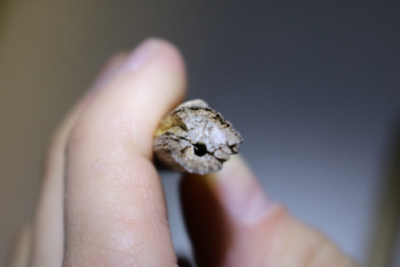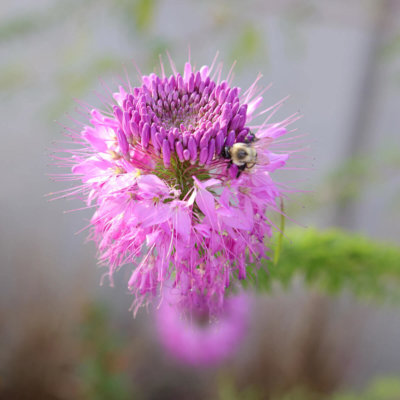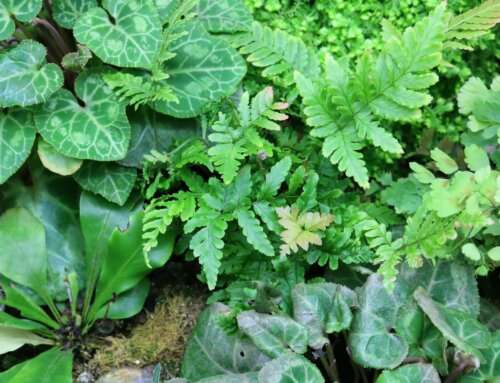Spring Cleaning with Pollinators in Mind
With warm weather and sunshine this early in spring, many gardeners are beginning their cleanup. While it can be exciting to finally be back in your garden after a long winter, the timing of these tasks is important for our native insects.

Native solitary bees, such as the Small Carpenter Bee, are a great example of species that overwinter in plant stems. At less than eight millimeters wide, these bees can be difficult to discern if you have them nesting in your garden.
To prevent damaging these overwintering insects, keep an eye out for small holes burrowed into broken or cut stems, especially stems that are spongy. These give you a clue that you have some beneficial residents in your garden.
Solitary bees care for and raise their young on their own. Throughout summer and fall, an individual bee will raise between 20 and 30 young, visiting hundreds of flowers during the season to bring enough pollen and nectar back to the nest. As the temperature drops in the fall, these bees go into a suspended state of dormancy called diapause. This early in the spring, the conditions are not quite warm enough to break that diapause just yet.
While it can be exciting to begin cutting back and tossing your spring plant materials in eagerness for the return of a green garden, waiting a little longer helps give our native pollinators a chance to wake up too.
If you have the itch to get out and garden on a warm early spring day, here’s what to do:
 Collect and save cut stems. Place them somewhere to the side of your garden until late spring or early summer. This allows native bees to emerge later in the spring when the timing is right.
Collect and save cut stems. Place them somewhere to the side of your garden until late spring or early summer. This allows native bees to emerge later in the spring when the timing is right.
Practice no tilling. The majority of native bees overwinter in the ground. Minimizing ground disturbance will keep from disrupting ground nests. If you plan on planting a cool-season crop, try to keep the tilling above six inches.
Be careful mowing. A pile of leaves is the perfect place for bumble bees and other species, such as butterflies and moths in various stages of development, to lay low during winter months. On chilly nights in early spring, the leaves provide essential shelter. Instead, try leaving your leaves in place—it’s great (and free!) mulch.



